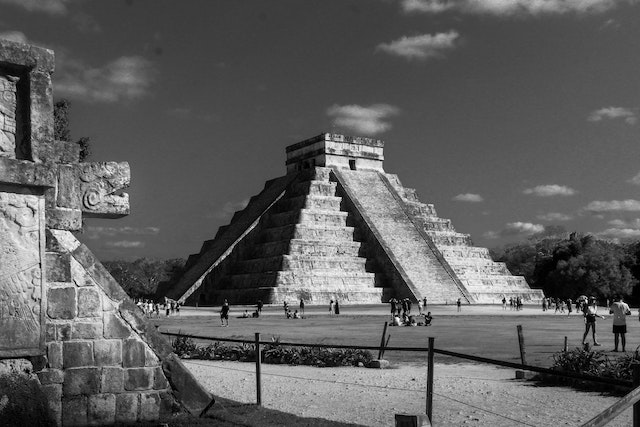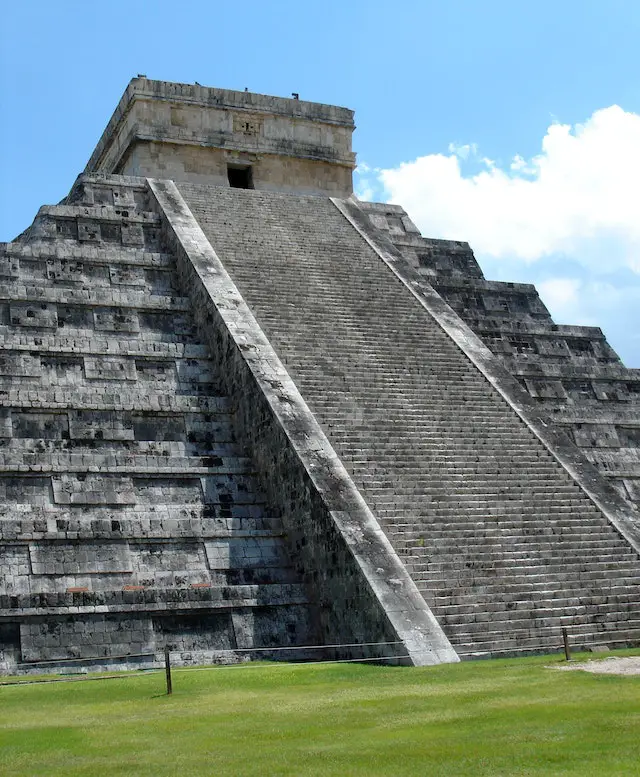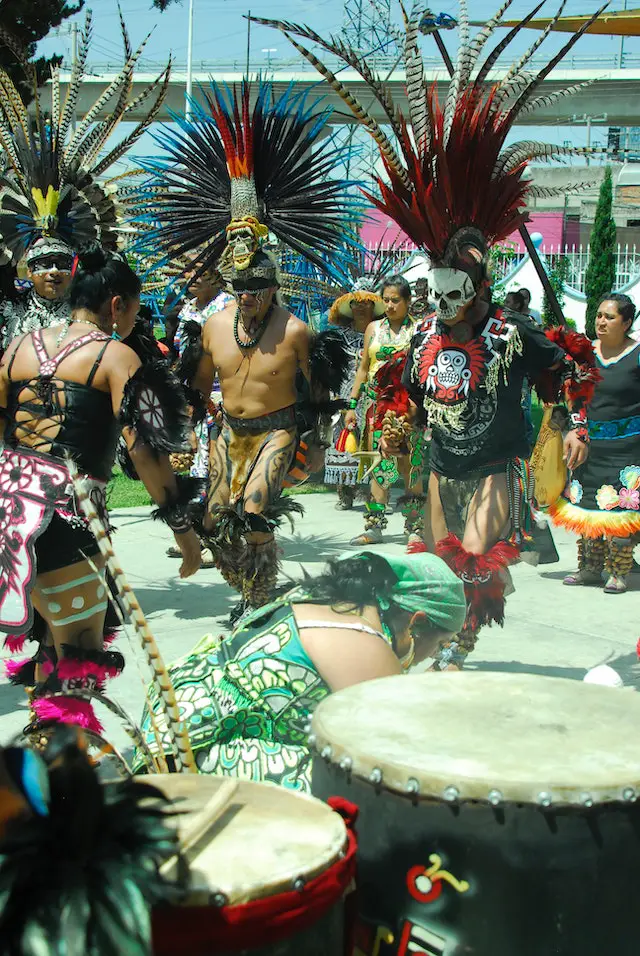
Aztec mythology is the belief system of the Aztecs, an indigenous people of Mexico and Central America who flourished in what is now today’s southern/central Mexico.
The Aztecs believed that supernatural forces controlled every aspect of life—including nature, culture, and politics—and their myths describe how these forces interacted with each other.
The Aztec pantheon was filled with a wide variety of gods, goddesses, and supernatural beings that could be called upon for protection, guidance, or assistance.
Aztec mythology is filled with many tales of adventure and legend, some of which are still told today. It provides a fascinating insight into the lives, beliefs, and culture of the Aztecs.
- Read also: Mayan Mythology: A Journey through the Ancient Civilization
- Read also: African Mythology: Tales of Gods, Heroes, and Magical Creatures
Gods and Goddesses of the Aztec Pantheon

The Aztecs had a complex pantheon of gods and goddesses that governed different aspects of life.
Quetzalcoatl – the Feathered Serpent God
Quetzalcoatl, or the Feathered Serpent God, was one of the most important and revered gods in Aztec mythology.
He was seen as a creator god who brought civilization to humanity and was also a benefactor of knowledge, arts, and culture.
He is often depicted as having wings or feathers and a long plumed tail.
Quetzalcoatl was believed to be responsible for the creation of the universe and all that it contains, including humans and animals.
He was also seen as a god of fertility and agriculture, as he was considered to be responsible for bringing life-giving rain from the heavens.
Quetzalcoatl was associated with winds, clouds, fertility, and wisdom—all of which were seen as vital elements to a successful civilization.
Tezcatlipoca – the God of Night
Tezcatlipoca was a powerful god in Aztec mythology, believed to be the creator of humans and the ruler of the night, sorcery, fate, and destiny.
His name literally translates to “smoking mirror,” reflecting his ability to manipulate the world of reflections and illusions.
He was associated with night, wind, air, darkness, chaos, war, and death.
Tezcatlipoca was seen as a shapeshifter who could take any form that he desired—that of a jaguar or an eagle or even a human being.
The god was also believed to be able to see into the future and manipulate fate.
He was feared by many, as his power could be used for both good and evil.
Tezcatlipoca was often depicted with a black obsidian mirror that he used to reflect events in the world around him, thus allowing him to control those events.
Huitzilopochtli – the God of War
Huitzilopochtli was a powerful god in Aztec mythology, believed to be the sun god, the patron deity of warfare, and the ruler of both heaven and earth.
He was a fierce warrior who led the Mexica people into battle and was seen as a protector and defender of his people.
Huitzilopochtli is often depicted wearing feathered garments and adorned with jewelry, carrying weapons such as spears, shields, and clubs.
He was said to bring success to warriors in battle and was venerated by both soldiers and priests alike.
As the sun god, he symbolized life, power, fertility, and strength. He was also associated with the seasons and responsible for the cycle of day and night.
Huitzilopochtli is often depicted in battle scenes or in scenes depicting his divine power.
Aztec Rituals and Celebrations

The Aztecs believed in honoring their gods and goddesses through ritual sacrifices, feasts, celebrations, and ceremonies.
Yayauhqui – New Year Ceremony
The Yayauhqui ceremony was a traditional Aztec celebration of the new year.
It was held every year in the month of Atlcahualo (July-August) and marked the beginning of a new cycle.
During this festival, priests would make offerings such as food and flowers to various gods, while singers and dancers performed traditional music and dances.
Participants in the ceremony would also take part in rituals to honor their ancestors, as well as make offerings of food, flowers and other items to the gods.
On this special day, sacrifices were also made—usually of animals or even human captives taken from neighboring tribes.
After these offerings had been made, it was believed that the gods would grant the Aztec’s prosperity and good fortune in the coming year.
Tlacaxipehualiztli – Festival of Flaying
The Tlacaxipehualiztli was an Aztec festival that celebrated the god Xipe Totec, who was believed to be responsible for fertility and agriculture.
During this two-week-long celebration, people would dress in costumes made of flayed human skin and engage in ritual dances and athletic competitions.
At the end of the festival, captives would be sacrificed to Xipe Totec as a way of showing respect and gratitude.
The ritualistic flaying of humans was meant to represent the renewal of life by stripping away the old and ushering in the new year.
This ceremony was seen as a way to honor Xipe Totec and ensure prosperity for the coming year.
It is believed that this ritual was largely responsible for the Aztec’s success in cultivating crops and maintaining good harvests.
Quetzalcoatl – Festival of Light
The Festival of Light was a celebration in honor of the god Quetzalcoatl.
This event was held at the beginning of every new year and lasted for five days, during which time people would light candles and decorate their homes with colorful paper decorations.
On the final day of the festival, people would gather together to watch as priests burned incense and made offerings to Quetzalcoatl.
During the festival, people would also make pilgrimages to the temple of Quetzalcoatl and offer sacrifices such as fruits and flowers in hopes of receiving divine favor.
This celebration was a symbol of hope, renewal, and enlightenment for the Aztecs.
The Festival of Light was an important part of Aztec culture and faith and was seen as a way to honor Quetzalcoatl and ensure success for the coming year.
- Read also: 10 Norse Mythology Facts That You Should Know
- Read also: 10 Greek Mythology Facts That Most People Don’t Know
Conclusion
The Aztecs believed that honoring their gods and goddesses through ritualistic ceremonies, sacrifices, and celebrations was essential to ensure good fortune and prosperity for the coming year.
The festivals of Yayauhqui, Tlacaxipehualiztli, and Quetzalcoatl were all integral parts of Aztec culture and faith and represented important symbols of hope, renewal, and enlightenment for the people.
The Aztecs believed that if they showed respect to their gods by performing rituals and offering sacrifices, the gods would look favorably upon them in return.
Thus, these ceremonies and celebrations were essential parts of Aztec culture and religious beliefs.



